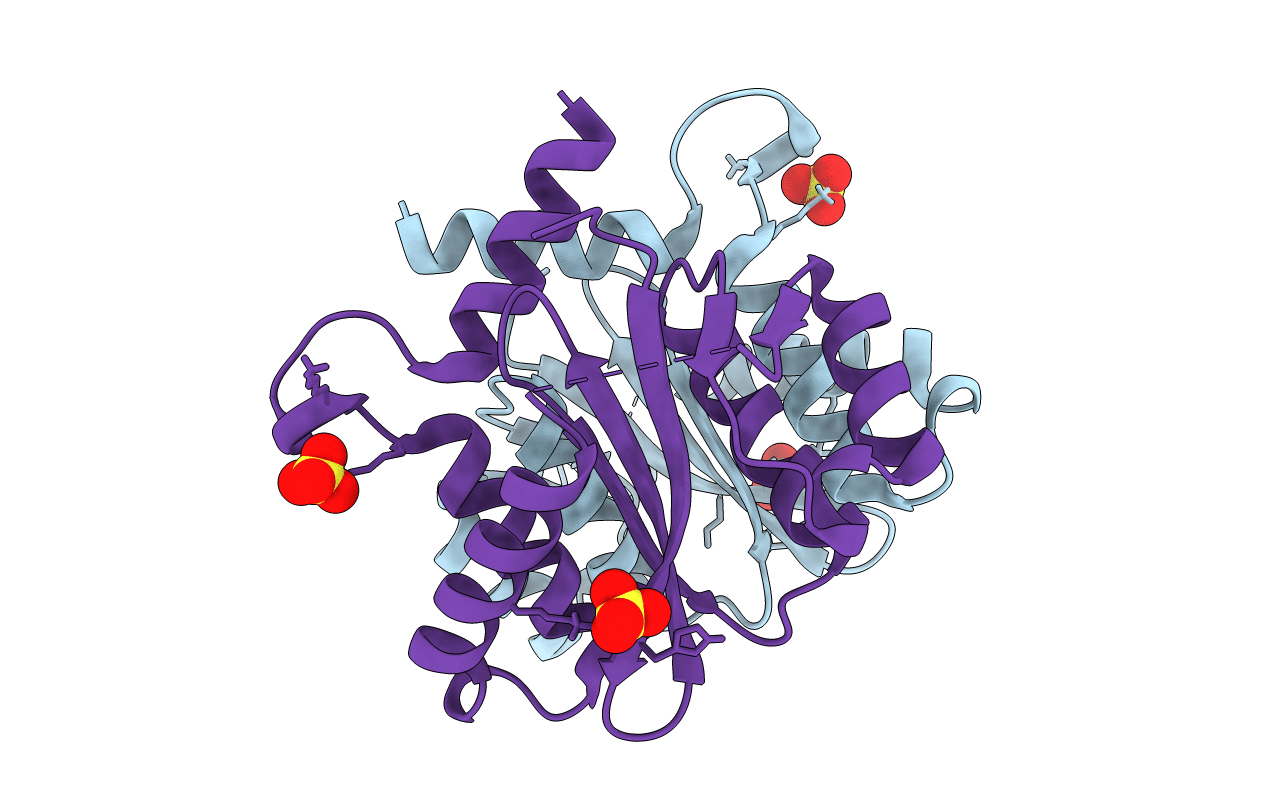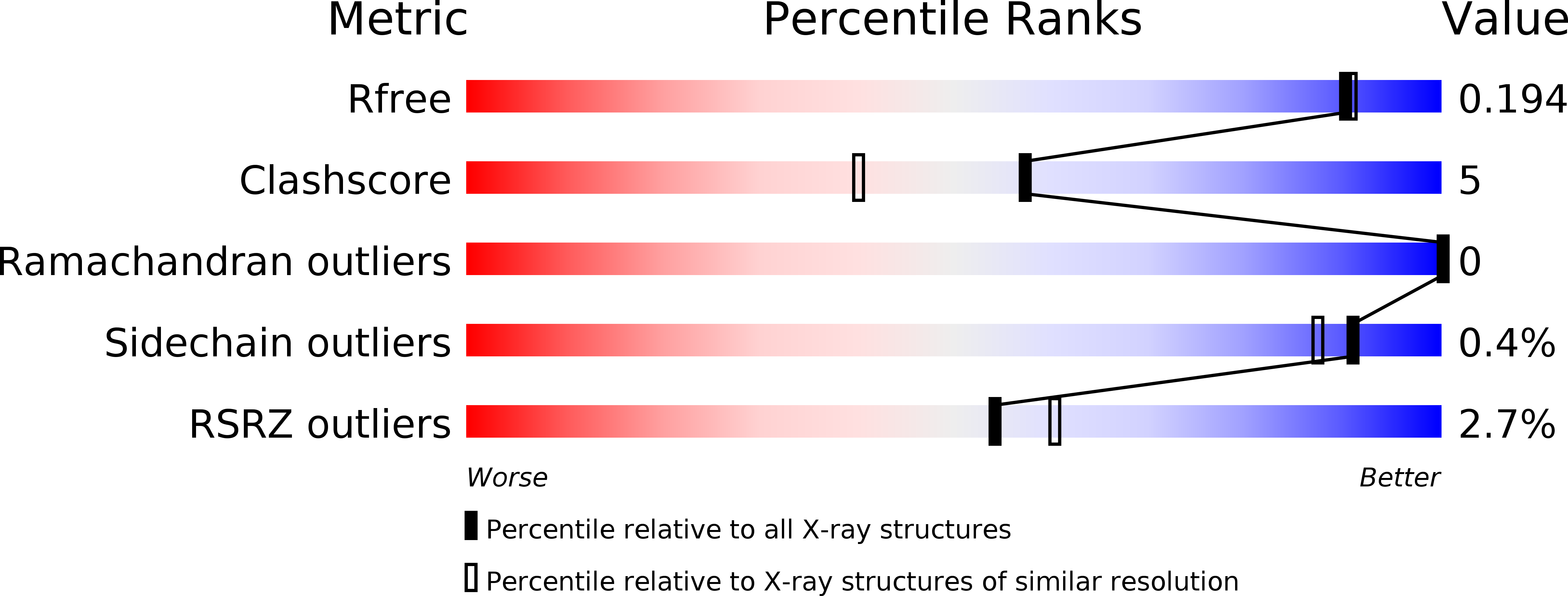
Deposition Date
2016-04-26
Release Date
2017-10-04
Last Version Date
2023-09-27
Entry Detail
PDB ID:
5JL4
Keywords:
Title:
Inhibitor resistant mutant catalytic core domain of HIV-1 Integrase
Biological Source:
Source Organism:
Human immunodeficiency virus 1 (Taxon ID: 11676)
Host Organism:
Method Details:
Experimental Method:
Resolution:
1.76 Å
R-Value Free:
0.19
R-Value Work:
0.15
R-Value Observed:
0.16
Space Group:
P 1


